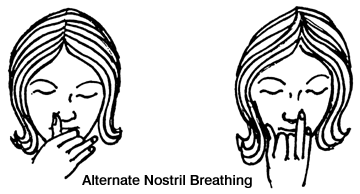
First, the details.
- Healthy young adults performed alternate nostril breathing exercise for 15 minutes every morning for 4 weeks.
- Cardio-respiratory parameters were recorded before and after the training period.
And, the results.
- Significant increases in peak expiratory flow rate (exhale) and pulse pressure (change in blood pressure during a contraction of the heart).
- No change in systolic blood pressure was reported.
- Significant decreases in heart rate, respiratory rate, and diastolic blood pressure.
The bottom line?
The authors concluded, “Results indicate that regular practice of alternate nostril breathing (Nadisudhi) increases parasympathetic activity.”
A second study this year reported that systolic and diastolic blood pressure decreased after alternate nostril breathing in healthy men experienced with yoga. And a study from 3 years ago reported, “Alternate nostril breathing may modulate cardio-respiratory and autonomic functions.”
This breathing exercise may complement the effects of medical therapy on high blood pressure and chronic obstructive pulmonary disease. It would be interesting to see its effect in people with heart and lung disease.
More on alternate nostril breathing from YogaHealth is here.
8/16/08 14:10 JR